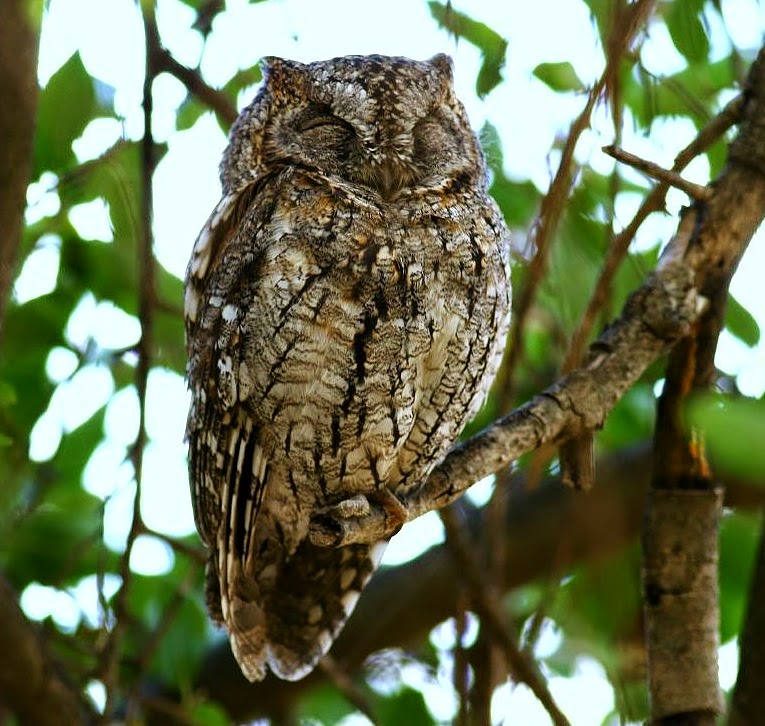 |
| Photo by Ruslou Koorts (Flickr) |
Common name:
African scops-owl (en); mocho-d’orelhas-africano (pt); petit-duc africain (fr); autillo africano (es); Afrika-zwergohreule (de)
Taxonomy:
Order Strigiformes
Family Strigidae
Range:
This species is found in sub-Saharan Africa, from southern Mauritania east to Eritrea and south to Namibia, Botswana, and northern and eastern South Africa. They are absent from the tropical forests of the Congo river basin.
Size:
These tiny owls are 15-19 cm long and have a wingspan of 40-45 cm. They weigh 45-120 g.
Habitat:
The African scops-owl is found in open savannas, dry tropical forests, scrublands, rural gardens and urban parks.
Diet:
They hunt by sallying out from a perch, taking the prey either from the ground or in flight. They mainly hunt insects such as grasshoppers, beetles, mantids, moths, crickets and cockroaches, but also take spiders, scorpions and small vertebrates such as rodents, frogs, geckos and small birds.
Breeding:
African scops-owls can breed all year round, usually starting after the local rainy season. They are monogamous and nest in a tree hole, often an old woodpecker nest. The female lays 2-6 white eggs which she incubates alone for 24-27 days while the male brings her food. The chicks are fed by both parents and fledge 3-4 weeks after hatching, but continue to receive food from their parents for another 2 months.
Conservation:
IUCN status – LC (Least Concern)
This species has an extremely large breeding range and is reported to be generally common throughout this range. The population is suspected to be stable in the absence of evidence for any declines or substantial threats.







